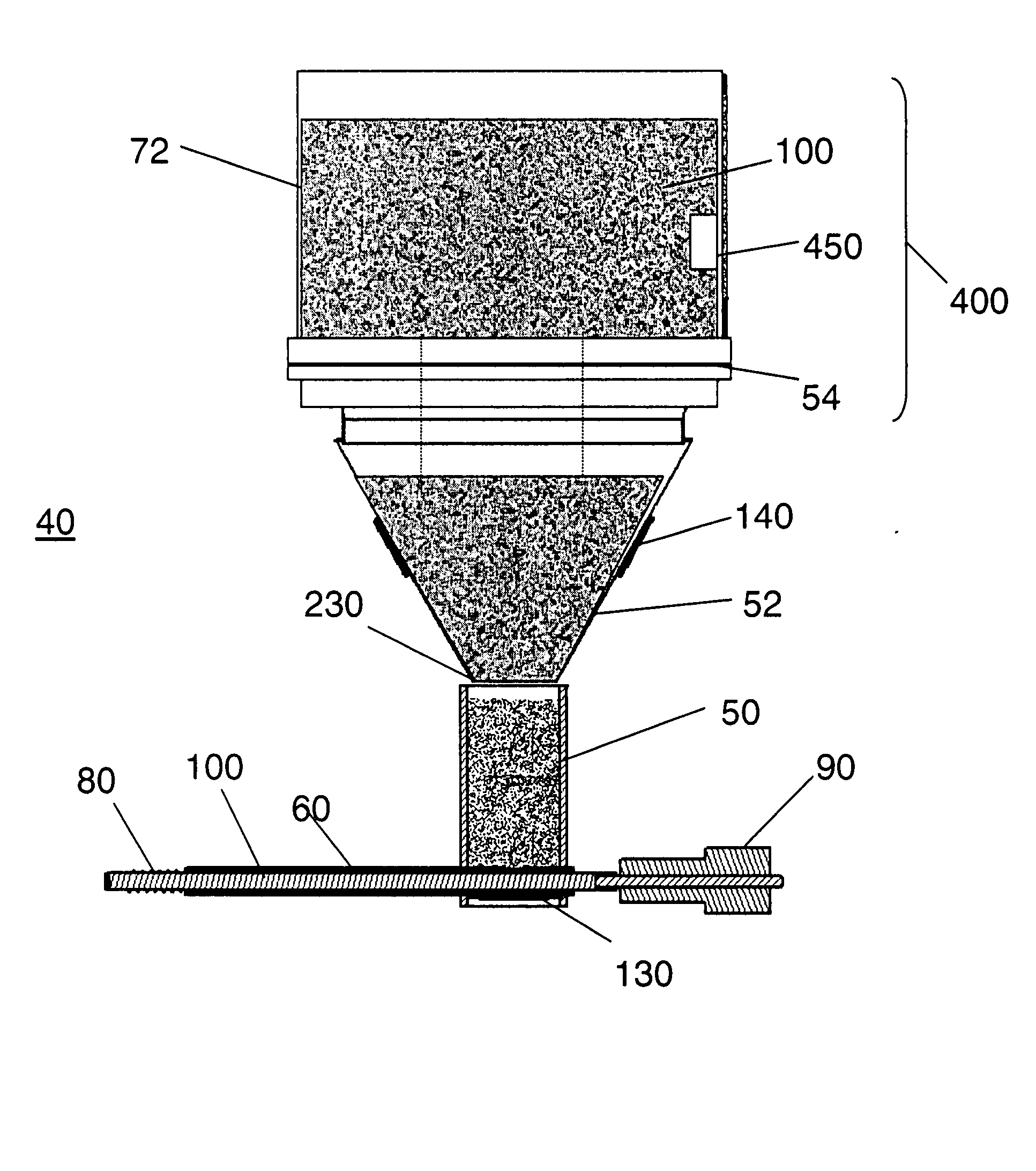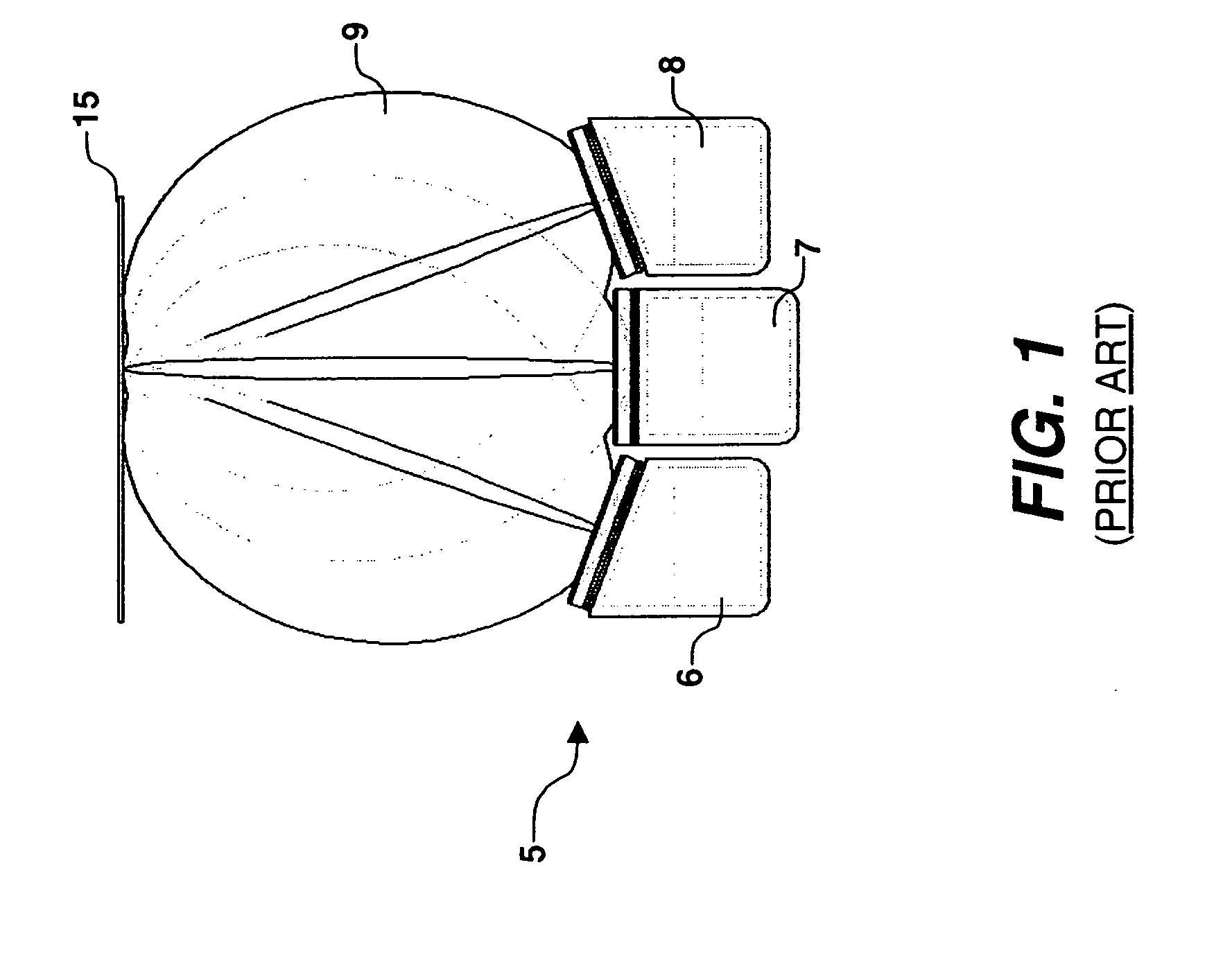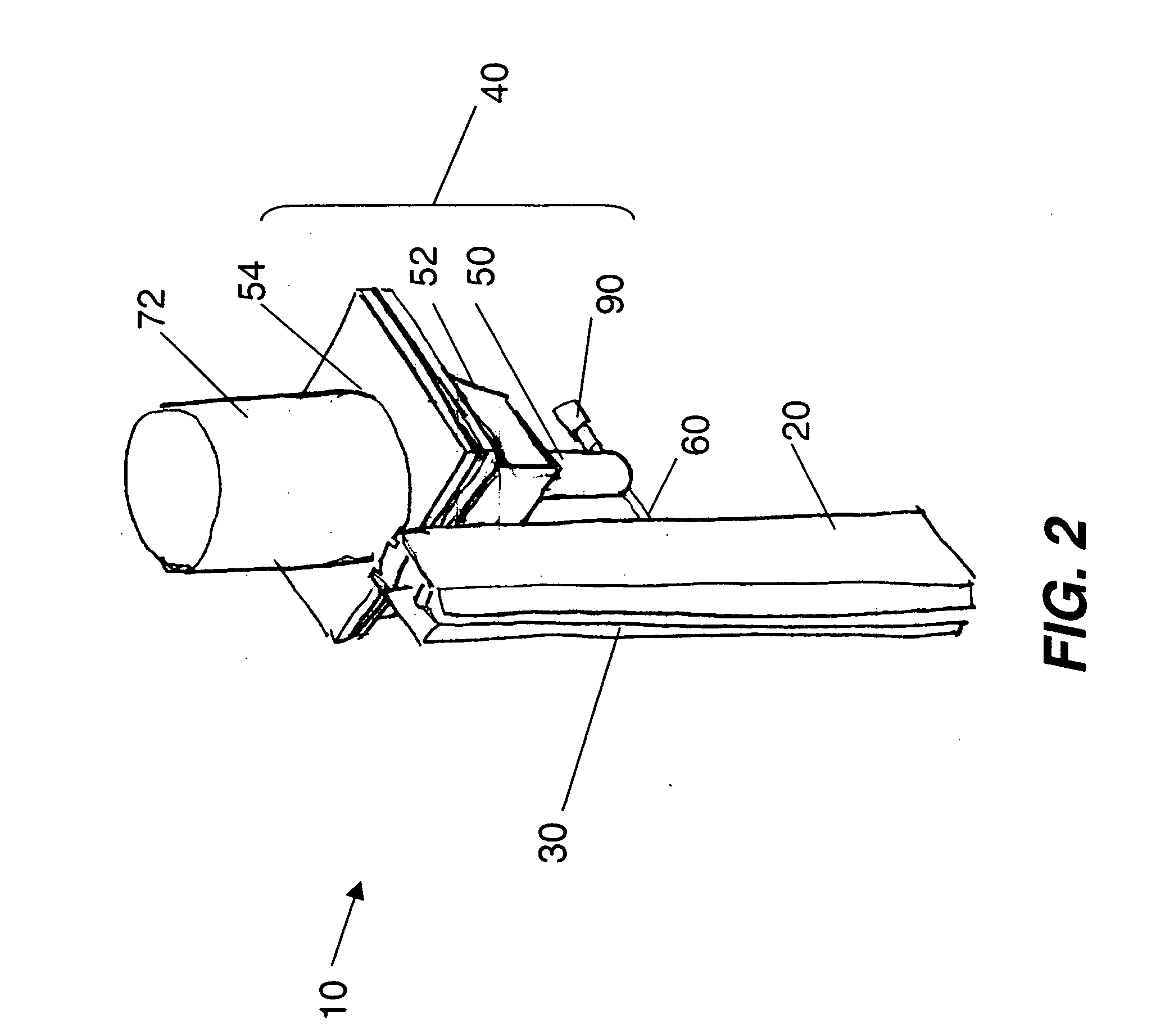Deposition system using sealed replenishment container
a replenishment container and replenishment system technology, applied in the direction of vacuum evaporation coating, chemical vapor deposition coating, coating, etc., can solve the problems of significant degradation, changes in the structure of the molecules and associated changes in the material properties, and the use of organic materials in the manufacture of oled devices are often subject to degradation, so as to reduce the risk of degrading, the effect of steady vaporization rate and linear vaporization rate control
- Summary
- Abstract
- Description
- Claims
- Application Information
AI Technical Summary
Benefits of technology
Problems solved by technology
Method used
Image
Examples
Embodiment Construction
[0052] Turning now to FIG. 2, there is shown a three-dimensional view of one embodiment of an apparatus according to the present invention for vaporizing organic particulate materials and condensing them onto a surface to form a layer. A vaporization apparatus 10 includes a manifold 20 and an attached feeding apparatus 40. Feeding apparatus 40 includes a feed container 50 and a feeding path 60. Feed container 50 is provided with a quantity of organic or other material in a particulate form, such as a powder in one embodiment.
[0053] Manifold 20 includes one or more apertures 30 through which vaporized organic material can exit to a substrate surface. Manifold 20 is shown in an orientation whereby it can form a layer on a vertically-oriented substrate, but it is not limited to this orientation. For example, manifold 20 can be oriented horizontally and can form a layer on a horizontal substrate. Manifold 20 has been described in detail by Long et al. in commonly-assigned, above-cited ...
PUM
| Property | Measurement | Unit |
|---|---|---|
| temperature | aaaaa | aaaaa |
| volume | aaaaa | aaaaa |
| height | aaaaa | aaaaa |
Abstract
Description
Claims
Application Information
 Login to View More
Login to View More - R&D
- Intellectual Property
- Life Sciences
- Materials
- Tech Scout
- Unparalleled Data Quality
- Higher Quality Content
- 60% Fewer Hallucinations
Browse by: Latest US Patents, China's latest patents, Technical Efficacy Thesaurus, Application Domain, Technology Topic, Popular Technical Reports.
© 2025 PatSnap. All rights reserved.Legal|Privacy policy|Modern Slavery Act Transparency Statement|Sitemap|About US| Contact US: help@patsnap.com



